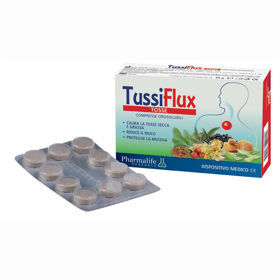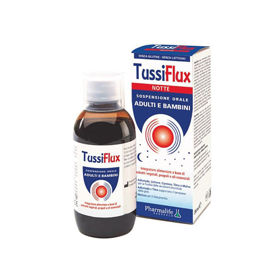Customer question:
What does whooping cough look like? Anonymous customer's question
Pharmacist's answer:
Whooping cough is a bacterial infection of the respiratory system caused by the bacterium Bordetella pertussis. It is characterized by a long-lasting cough that often recurs and can be so intense that it causes difficulty in breathing. In addition to coughing, symptoms can include a runny nose, fever, fatigue, and, in some cases, vomiting.
Babies and young children are most at risk, as whooping cough can cause breathing problems and even death, so children must be vaccinated against this disease by vaccination recommendations. Treatment for whooping cough usually includes antibiotics and symptomatic therapy to relieve the cough and other symptoms. It is also crucial to prevent the spread of the disease by isolating the patient.
What type of cough is whooping cough?
Whooping cough is a type of cough resulting from a bacterial infection of the respiratory system, especially the throat and trachea. It is caused by the bacterium Bordetella pertussis. This type of cough is characterized by a prolonged and paroxysmal (attack) cough lasting several weeks or even months. Whooping cough is usually worst in the initial phase of the infection and then gradually diminishes. A unique feature of whooping cough is a "spasmodic" cough, which can cause breathing problems and sometimes even vomiting or loss of consciousness.
What are the symptoms of whooping cough?
Recognition of whooping cough is based on a combination of signs and symptoms that appear during the disease.
Key signs and symptoms of whooping cough include:
- Paroxysmal cough: an intense, continuous cough that often occurs in fits (paroxysms). These coughing fits can be so severe that they cause difficulty breathing or vomiting.
- Breathing problems: An intense cough can cause breathing problems or shortness of breath.
- General malaise: Patients with whooping cough may feel exhausted or have body aches.
- Unwanted symptoms: in addition to coughing, patients with whooping cough may experience other symptoms such as nasal congestion, runny nose, sneezing, fever, or general malaise.
- Vomiting or feeding problems: An intense cough can trigger vomiting or cause feeding problems.
How do we distinguish whooping cough from pneumonia?
Whooping cough is a bacterial infection of the respiratory system caused by the bacterium Bordetella pertussis, while pneumonia can be a bacterial, viral, or fungal infection of the lungs.
Whooping cough is a prolonged and paroxysmal cough lasting several weeks or months. Symptoms include a runny nose, fever, fatigue, and sometimes vomiting. Pneumonia is often associated with symptoms such as high fever, severe chest pain, difficulty breathing, coughing up sputum (mucus or pus), fatigue, and rapid breathing.
The diagnosis of whooping cough is usually based on characteristic symptoms and laboratory tests, such as molecular analysis of a throat swab. Pneumonia, however, is usually diagnosed through a physical exam, chest X-ray, and other laboratory tests, such as blood and sputum tests.
How do we distinguish between whooping cough and bronchitis?
Whooping cough and bronchitis are two different respiratory diseases that may have similar symptoms but differ in causes, duration, and characteristics of the cough.
Whooping cough is a bacterial respiratory infection caused by the bacterium Bordetella pertussis. It is characterized by a prolonged and paroxysmal (attack) cough, runny nose, fever, fatigue, and sometimes vomiting. The cough is usually very characteristic and spasmodic and can cause breathing difficulties.
Bronchitis is an inflammation of the bronchi, which can be caused by viruses, bacteria, or irritants such as tobacco smoke, polluted air, or chemicals. Bronchitis symptoms include a cough, often with sputum (coughing up mucus), shortness of breath, chest tightness, fever, muscle aches, and fatigue. Cough in bronchitis is usually productive, which means that sputum is coughed up.
Is whooping cough a dry cough?
Oslovskia cough is not necessarily a dry cough. Whooping cough is characterized primarily by a paroxysmal (attack) cough, which is often spasmodic and long-lasting. During coughing fits, expectoration of mucus (sputum) may also occur, which means that the cough is not necessarily dry but can also be productive. However, the critical characteristics of whooping cough are its intensity and duration, which can cause breathing difficulties and even vomiting.
How long does whooping cough last?
Whooping cough lasts a long time, usually several weeks or months. Early treatment with antibiotics can help shorten the duration of whooping cough. The cough is usually more severe in infants and young children and may last longer. Coughs can also be prolonged in people with weakened immune systems or other health problems. People vaccinated against whooping cough usually have milder symptoms and a shorter duration of illness. Nevertheless, the cough in whooping cough may gradually decrease and improve, but some symptoms, such as paroxysmal cough, may persist for several weeks after the onset of the disease.
Interesting reading: How to recognize whooping cough
Interesting reading: Pertussis vaccination










 Facebook
Facebook
 Instagram
Instagram
 info@moja-lekarna.com
info@moja-lekarna.com

